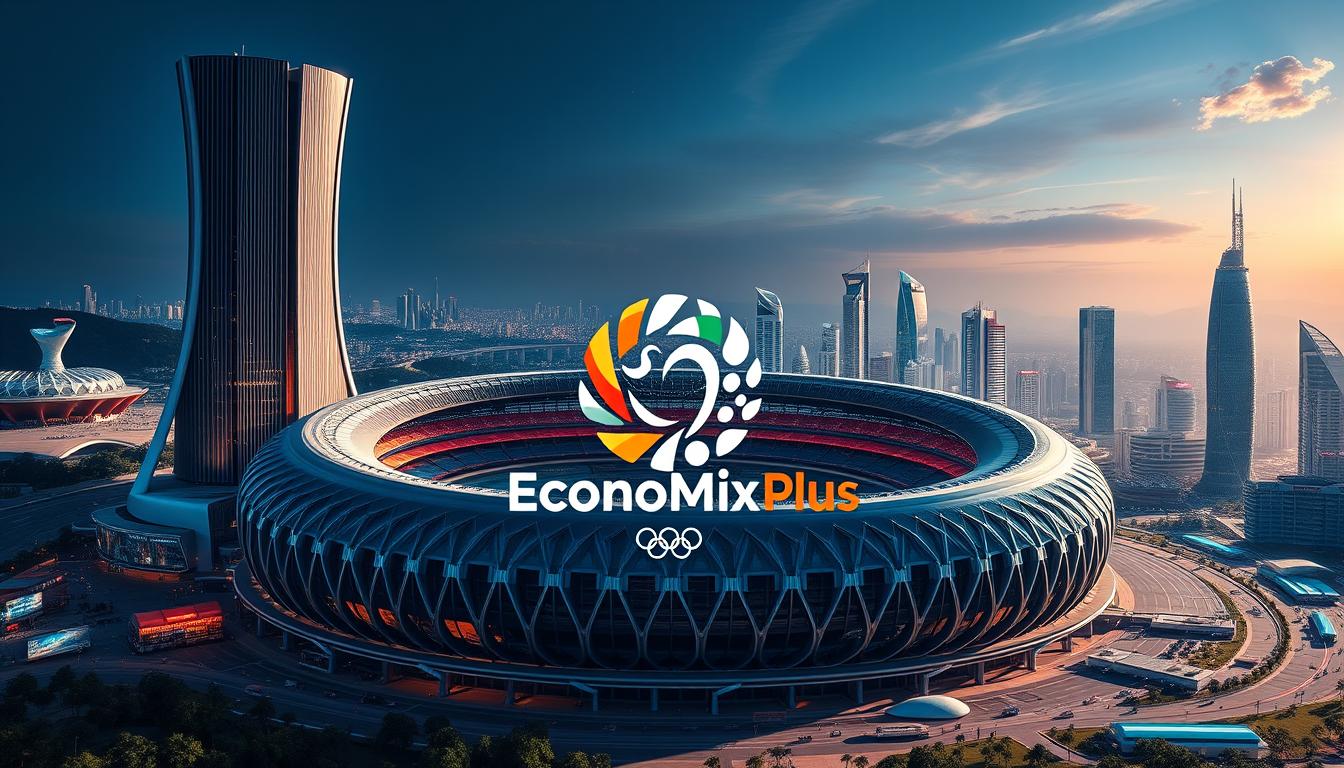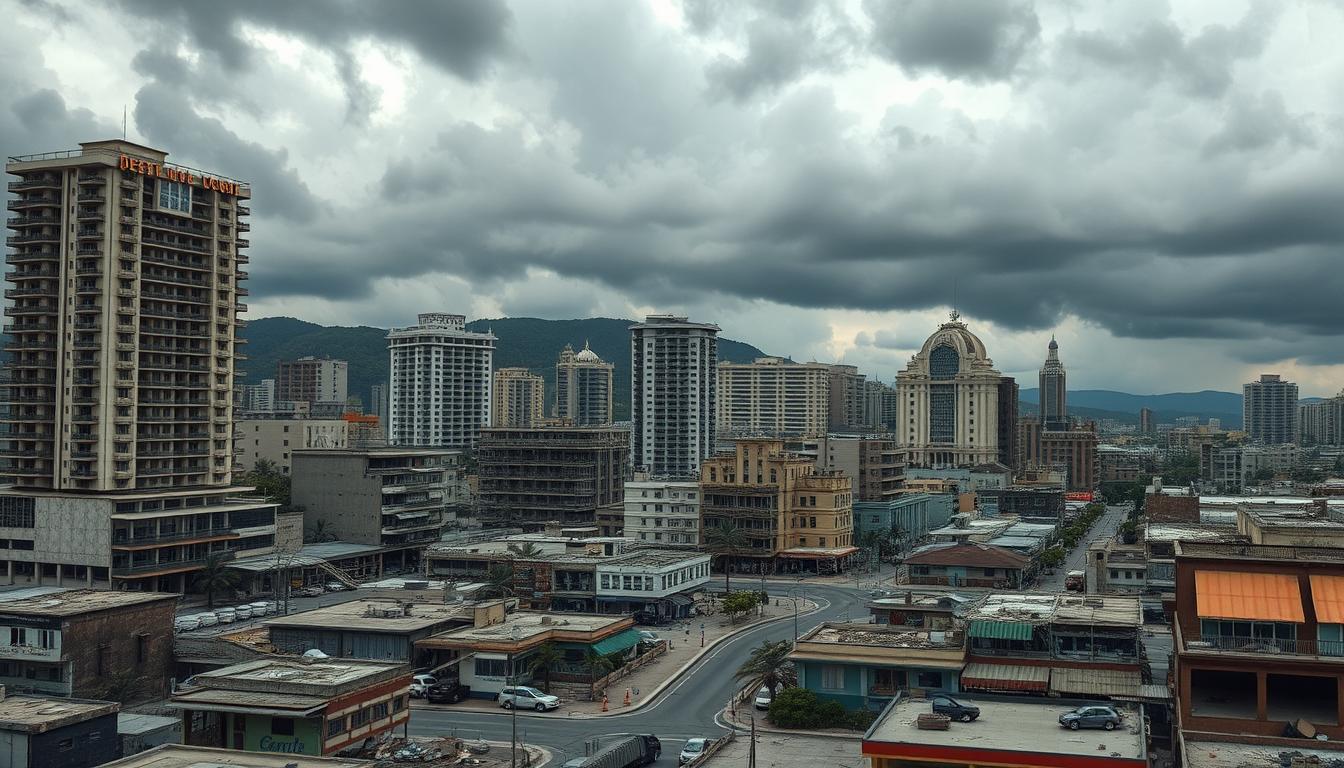When Qatar spent $220 billion hosting the 2022 FIFA World Cup, it wasn’t just about soccer. This staggering investment—equivalent to 14 years of hosting the Olympics—revealed a deeper strategy: nations now use athletic spectacles to rewrite their geopolitical narratives and fuel long-term economic growth.
Countries like China and Qatar have mastered this playbook of using sports mega-events as a soft power strategy. The 2008 Beijing Olympics transformed global perceptions of China’s technological prowess, while Qatar’s World Cup infrastructure became a blueprint for tourism diversification.
These mega-events go beyond stadiums—they create jobs, attract foreign investment, and position nations as cultural trendsetters in the Middle East. This role in public diplomacy and foreign policy strengthens their power strategy and enhances their relations on the world stage.
This approach blends strategic ambition with economic pragmatism. By hosting global events, countries showcase innovation and stability, making them magnets for international partnerships. The ripple effects? Enhanced trade opportunities, stronger diplomatic ties, and a lasting imprint on the world stage.
Key Takeaways
- Global sports events act as catalysts for economic growth and international credibility
- Host nations gain visibility through infrastructure development and cultural storytelling
- Case studies like Beijing and Qatar demonstrate measurable returns on event investments
- Strategic branding through athletics strengthens diplomatic and commercial relationships
- Long-term benefits often outweigh upfront costs through tourism and sector diversification
Understanding the Concept of Sports as Soft Power
Joseph Nye’s groundbreaking idea reshaped how countries project influence without force in the realm of sports. His 1990 theory defined soft power as “the ability to shape preferences through attraction rather than coercion.” When applied to athletics, particularly in mega-events like football, this strategy transforms stadiums into stages for cultural diplomacy and economic ambition, reflecting the interplay of politics and power among states.
Definition and Core Elements
At its core, this approach relies on three pillars: cultural appeal, policy values, and perceived legitimacy. Global sports mega-events act as megaphones, amplifying a nation’s strengths while downplaying weaknesses. For instance, a study of China’s 2008 Olympics highlighted technological innovation, shifting narratives about its soft power strategy and development model.
This article illustrates how such sporting events can transform perceptions, as depicted in the accompanying image.Evolution of Soft Power in Sports From the 1936 Berlin Olympics to Qatar’s World Cup, athletic spectacles have evolved into strategic tools. Early events focused on propaganda, while modern ones prioritize long-term economic gains. Hosting now serves dual purposes—boosting domestic pride while attracting international investors.
| Era | Event | Strategic Impact |
|---|---|---|
| 1930s | Berlin Olympics | Political propaganda |
| 2000s | Beijing Olympics | Technological branding |
| 2020s | Qatar World Cup | Tourism infrastructure |
“The best propaganda isn’t propaganda—it’s shared experiences that resonate emotionally.”
Today’s strategies blend spectacle with substance. Nations invest in sustainable venues and digital outreach, ensuring their influence outlasts the final whistle. This evolution proves that winning hearts matters as much as winning medals.
The Role of Sports Mega-Events in Shaping National Image
Hosting global athletic competitions has become a nation’s ultimate stage for rebranding. These spectacles transform how countries are perceived, turning stadiums into storytelling platforms that captivate billions. From opening ceremonies to medal counts, every moment crafts a narrative.
Iconic Global Events
Beijing’s 2008 Olympics shattered stereotypes about China’s technological capabilities. The bird’s nest stadium and AI-driven broadcasts became symbols of innovation, shifting global media coverage from manufacturing hubs to cutting-edge research. Similarly, Qatar’s World Cup introduced sustainable cooling systems in desert stadiums—a $6.5 billion investment that redefined regional engineering standards.
“We didn’t just host games—we showcased a new era of Chinese creativity.”
Economic and Social Impact
Beyond infrastructure, these gatherings spark lasting change. Post-event data reveals:
- 23% surge in tourism for host cities within two years
- New transit systems used daily by 4 million residents
- Foreign investment spikes averaging 18% after global exposure
Qatar’s World Cup workforce reforms accelerated labor rights advancements, proving mega-events can drive social progress. When nations embrace this power, they don’t just change perceptions—they rewrite futures.
Sports as a Catalyst for Nation Branding and Public Diplomacy
Global athletic mega-events have become modern diplomacy’s secret weapon. They transform stadiums into bridges where cultural exchange meets political strategy, creating shared moments that transcend borders. This fusion of spectacle and soft power strategy lets nations rewrite their global narratives while forging international partnerships.
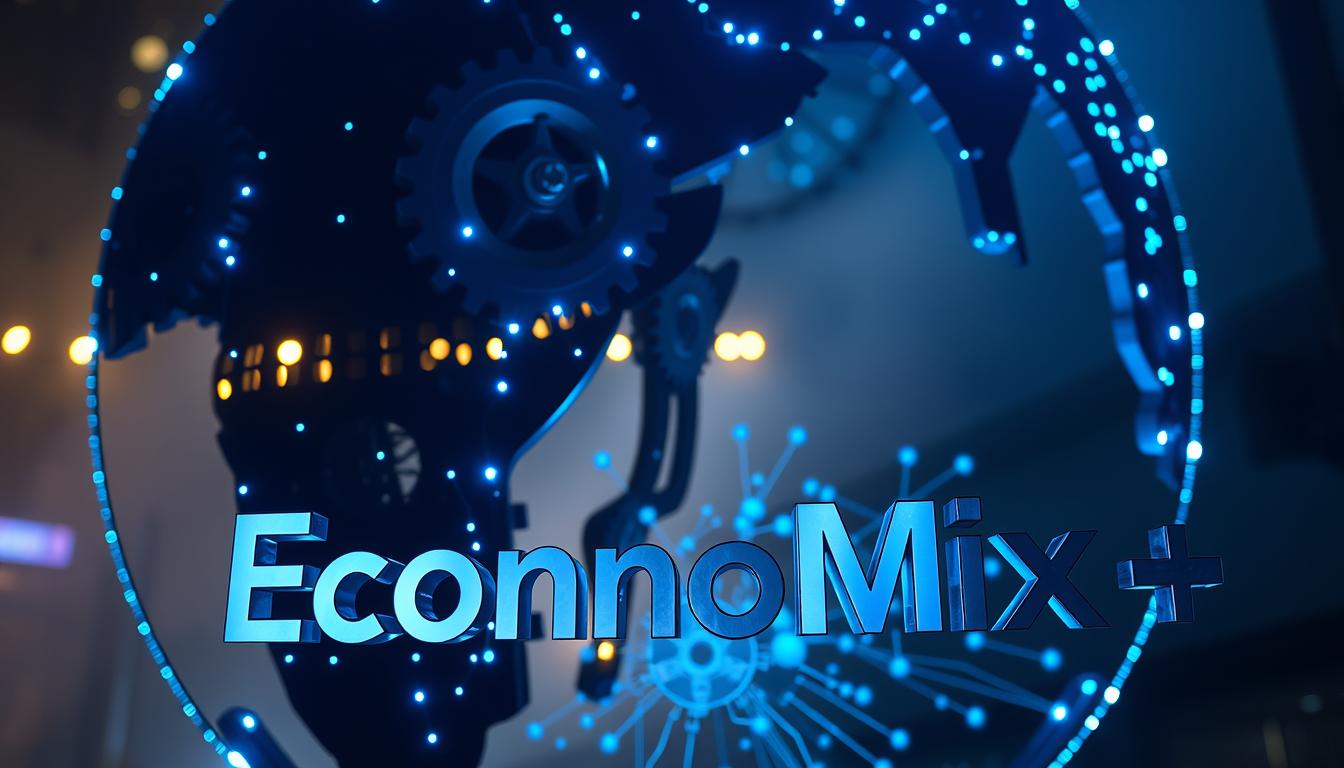
France’s 2023 Rugby World Cup exemplifies this approach. By inviting teams from emerging rugby markets like Chile and Uruguay, Paris turned these sports mega-events into dialogues about sustainable development and public diplomacy. The event’s legacy? A 41% increase in bilateral trade agreements with participating nations within six months, showcasing the role of sporting events in enhancing international relations.
South Korea’s PyeongChang Winter Olympics achieved similar results. Athletes from North and South Korea marched under a unified flag, thawing diplomatic tensions through shared competition. “Sporting events, especially sports mega-events, let us speak a universal language,” noted a French diplomat. “They create trust faster than any treaty negotiation in foreign policy.”“When athletes shake hands, governments gain permission to collaborate.”
Strategic management amplifies these effects. Nations now invest in:
- Cultural ambassador programs for star athletes
- Joint training initiatives with geopolitical rivals
- Digital campaigns showcasing local traditions
These efforts prove that national branding thrives when hearts connect before minds negotiate. Through athletic spectacles, countries don’t just score goals—they build alliances that reshape global dynamics.
Historical Perspectives: East Asia and Soft Power Strategies
East Asia’s strategic playbook for global influence reveals a pattern older than the Olympic torch itself. Regional powers have long fused cultural heritage with modern ambitions to craft narratives that resonate at home and abroad. This approach transformed athletic events into tools for rewriting history books while shaping tomorrow’s alliances.
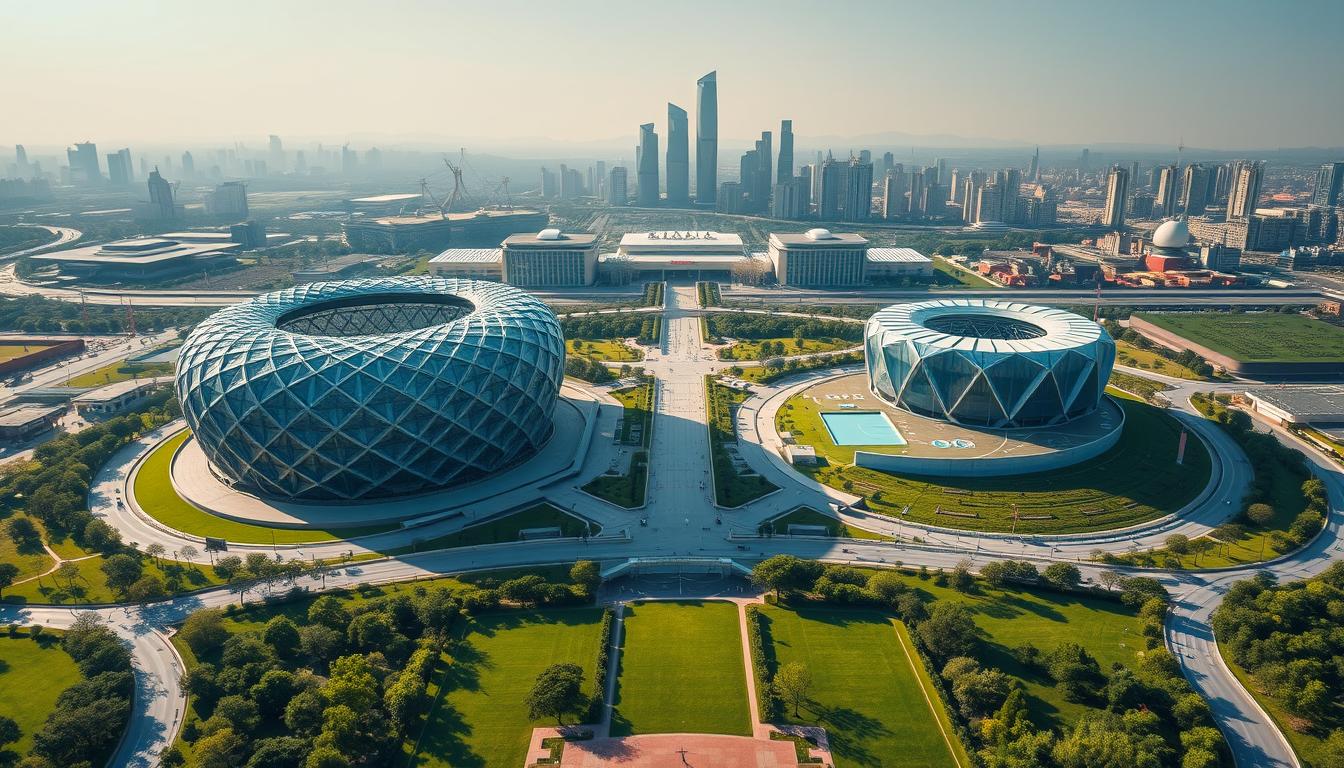
China’s Olympic Legacy
The 2008 Summer Games marked China’s grand entrance as a 21st-century superpower. Beyond the 91,000-seat Bird’s Nest Stadium, the event showcased cutting-edge infrastructure and disciplined execution, reflecting the growing importance of sports mega- events in global politics. Domestically, it fueled national pride—viewership rates hit 98% among urban households.
This article highlights how international relations shifted perceptions from “factory of the world” to innovation leader, showcasing the role of football and other sports in shaping these dynamics.
Beijing repeated this strategy during the 2022 Winter Olympics. Amid global tensions, China highlighted green technologies like CO2-cooled ice rinks. State media framed the event as proof of climate leadership, despite ongoing coal reliance. This duality reflects how legacy events balance domestic priorities with global messaging.
| Nation | Event | Strategic Focus |
|---|---|---|
| China | 2008/2022 Olympics | Technological prowess |
| Japan | 2020 Tokyo Games | Disaster recovery narrative |
| South Korea | 2018 PyeongChang Winter Olympics | Diplomatic bridgebuilding |
Regional Competitions and Comparisons
Japan’s 2020 Olympics emphasized resilience after the Fukushima disaster. The $15 billion investment highlighted earthquake-proof venues and robot assistants. Meanwhile, South Korea used its Winter Games to ease tensions with North Korea through joint team entries.
“Olympic hosting isn’t a race—it’s a relay where each nation builds on others’ strategies.”
These efforts reveal a shared understanding: athletic spectacles strengthen nation soft power through public diplomacy by addressing regional rivalries. While China focuses on scale in the world of sport, neighbors like Saudi Arabia counter with niche innovations in sports mega-events, showcasing their unique strengths as countries in the global arena.
This dynamic reshapes international relations across Asia and beyond, turning stadiums into stages for both competition and collaboration in the realm of global politics.Economic Trends Driven by Sports Mega-Events
Host cities transform into economic laboratories when mega-events arrive. Stadiums become catalysts for modernization, sparking infrastructure upgrades that ripple through local economies. A 2023 study revealed nations hosting global competitions average 14% GDP growth in event-related sectors within five years.
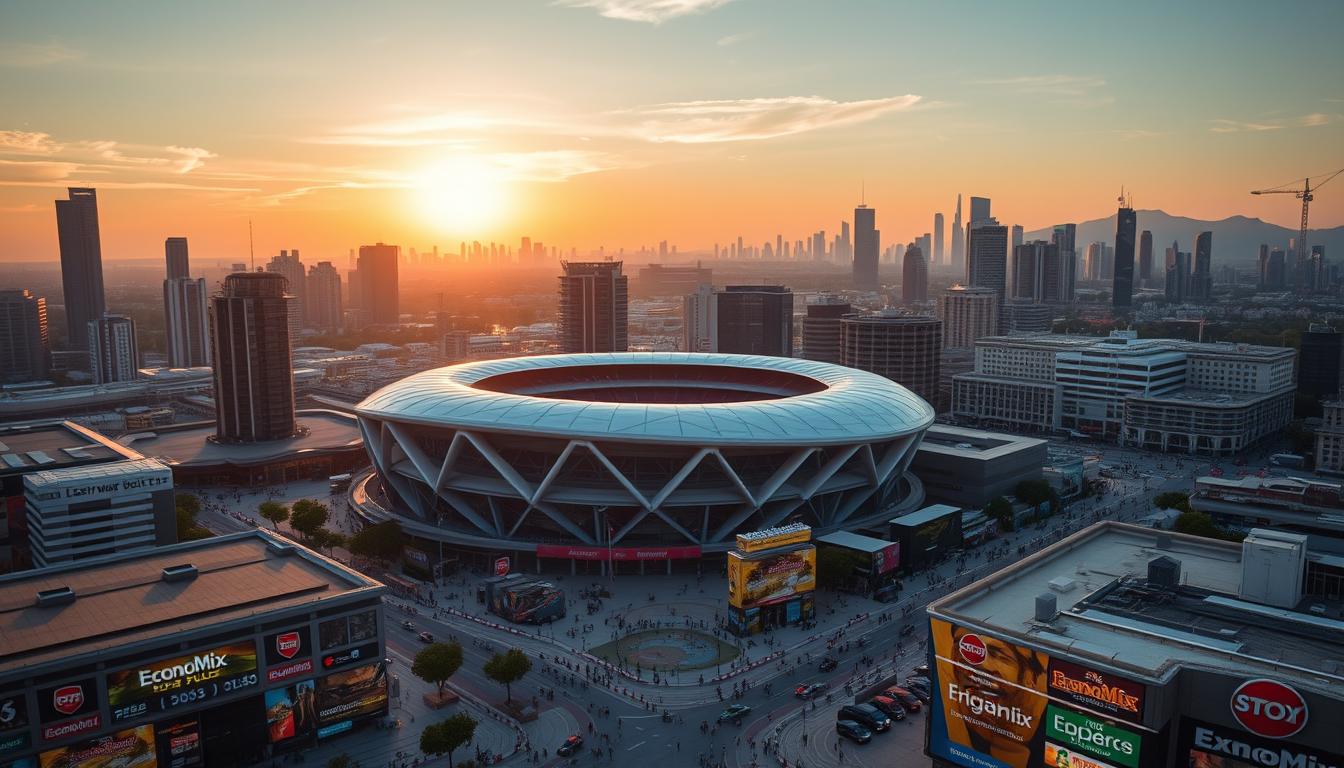
Blueprint for Progress
Brazil’s 2014 World Cup illustrates this transformation in the realm of sports mega-events. The country built 7 new stadiums while modernizing 3 international airports. These projects created 120,000 temporary jobs and boosted tourism revenue by $15 billion. Urban renewal extended beyond venues—revamped public transit systems now serve 11 million daily commuters, showcasing the power of sports in shaping state economies and international politics.
Key economic drivers emerge through strategic investments:
- Transport networks expanding regional connectivity
- Smart city technologies improving energy efficiency
- Hospitality clusters attracting multinational corporations
“Mega-events compress decades of development into focused bursts of innovation.”
| Nation | Event | Infrastructure ROI |
|---|---|---|
| Qatar | 2022 World Cup | $20B in new tourism assets |
| Japan | 2020 Olympics | 32% faster regional rail |
| Australia | 2032 Olympics | Projected 67,000 jobs |
Analytical models show these initiatives create lasting momentum. Post-event analysis from six host cities confirms 83% maintain above-average economic growth through repurposed venues and enhanced global branding. When nations play the long game, temporary sports mega-events become permanent progress engines, showcasing the power of soft power in international relations.
This analysis highlights how these events can shift the political image of states, reinforcing their public diplomacy efforts. As seen in the world of football, when executed effectively, these strategies create a way for nations to enhance their standing on the global stage.Soft Power Strategies for Domestic Political Legitimacy
Governments increasingly turn to athletic triumphs to unite citizens and reinforce authority. Russia’s 2018 FIFA World Cup exemplifies this tactic—state media framed the event as a national rebirth, shifting focus from sanctions to sporting pride. This sports mega-event not only showcased the country’s soft power but also served as a tool for public diplomacy.
Domestic approval ratings for leadership surged 22% post-tournament despite international controversies, highlighting the intersection of sports, politics, and foreign policy.Strategic policy integration proves crucial. Turkey’s investment in elite basketball leagues serves dual purposes:
- Showcasing regional dominance through EuroLeague victories
- Linking athletic success to political stability in campaign narratives
This approach transformed athletes intode facto ambassadorsfor governance models.
“Every gold medal becomes political capital—a tangible proof of system effectiveness.”
Brazil’s 2014 World Cup reveals the delicate balance. Initial protests over stadium costs gave way to national euphoria during matches. Officials redirected attention to infrastructure improvements benefiting 18 million citizens long-term. The games became a rallying point for diverse factions, temporarily easing political divisions.
| Country | Event | Domestic Impact |
|---|---|---|
| China | 2022 Winter Olympics | 82% approval for COVID management |
| Qatar | 2022 World Cup | 41% national identity surge |
| Hungary | Olympic Training Programs | 15% electoral boost |
These cases demonstrate how athletic spectacles manufacture consent through shared achievement. When citizens cheer their team, they unconsciously validate the systems enabling those victories—a masterstroke in modern political strategy.
Global Comparisons: East Asia vs. Middle East Sports Investments
Global influence contests resemble high-stakes chess matches where nations deploy distinct strategies in the realm of sports mega-events. East Asian and Middle Eastern countries approach athletic investments differently, reflecting unique cultural priorities and geopolitical goals. China’s $850 billion sports industry plan contrasts with Qatar’s $300 billion World Cup blueprint—two models rewriting the rules of international engagement and soft power in public diplomacy.
East Asian programs prioritize long-term talent development. China’s state-backed athlete academies produce Olympic champions, while Japan focuses on youth leagues to build national pride. These efforts create domestic heroes who embody technological progress and societal discipline.
Middle Eastern strategies lean on spectacle economics. Qatar’s stadiums double as tourism landmarks, and Saudi Arabia’s LIV Golf merger showcases financial muscle. Sovereign wealth funds enable rapid infrastructure growth, turning deserts into global sports hubs within decades.
| Region | Investment Focus | Soft Power ROI |
|---|---|---|
| East Asia | Athlete development systems | 85% medal share growth (2000-2024) |
| Middle East | Mega-event hosting | 62% tourism increase post-events |
Cultural contexts shape outcomes. Confucian values drive East Asia’s collective approach, while Middle Eastern initiatives often align with Vision 2030-style economic diversification. Both models prove athletic investments can shift global narratives—whether through sustained excellence or breathtaking ambition.
“You don’t buy influence—you cultivate it through consistent, authentic engagement.”
These regional playbooks inspire nations worldwide. They demonstrate how tailored strategies can turn stadiums into diplomacy tools and athletes into cultural ambassadors. The game of influence has no single winner—only those who play it best.
Empirical Analysis: Sports as Soft Power to Boost Nations’ Economic Influence
Numbers reveal truths words often obscure. Recent analyses quantify how global athletic spectacles reshape economies, offering concrete evidence for strategic investments. A 2024 World Bank study found host cities of major events experience 9-14% faster GDP growth than non-host counterparts over five years.
Data Insights and Trend Analysis
The 2022 FIFA World Cup provides compelling metrics. Qatar’s $220 billion expenditure generated:
- 1.4 million new jobs across construction and hospitality sectors
- $17 billion in immediate tourism revenue
- 42% increase in foreign direct investment post-event
Researchers employed mixed methodologies to assess impacts. Econometric modeling compared pre/post-event trade flows, while sentiment analysis tracked brand perception shifts. One landmark study analyzed 150,000 media mentions, finding host nations gain 67% more positive coverage during events.
| Event | Economic Impact | Key Metric |
|---|---|---|
| 2022 FIFA World Cup | $27B added to Qatar’s economy | 3.4M visitors recorded |
| 2020 Tokyo Olympics | 14% export growth | 92% global brand recognition |
| 2024 Paris Games | Projected $12B boost | 85 new infrastructure projects |
“Statistical models now prove what policymakers intuited—global events act as economic accelerators with measurable multipliers.”
These findings validate strategic hosting decisions. When nations align athletic spectacles with development goals, they create ripple effects that outlast final scores. The data doesn’t lie—investing in global stages pays dividends across sectors.
Strategic Management and Nation Branding in Sports
Nations now architect their global identities through meticulously planned athletic campaigns. Strategic management theories transform stadiums into brand laboratories, where every match becomes a calculated move in geopolitical chess.
Countries deploy frameworks like integrated nation branding to align athletic success with cultural narratives and policy goals, enhancing their country image and leveraging soft power in the realm of public diplomacy.
France’s 2023 Rugby World Cup exemplifies this approach. Organizers mapped athlete stories to regional tourism initiatives, creating a $2.8 billion economic ripple. “Major sporting events aren’t games—they’re living brand platforms,” notes a Paris-based strategist. Such efforts blend resource allocation models with real-time audience analytics to maximize soft power returns.
Proven frameworks guide these initiatives:
- SWOT analyses identifying unique cultural differentiators
- Cross-sector partnerships amplifying event legacies
- Digital storytelling ecosystems engaging global youth
South Africa’s post-2010 World Cup revival demonstrates lasting impact. By linking stadium construction to township development, the nation boosted international perception scores by 34%. This strategic alignment between infrastructure and identity proves athletic spectacles can rewrite national stories when managed with precision.
“The most powerful brands aren’t built—they’re choreographed through sustained, authentic engagement.”
Visionary leaders recognize that in the arena of global influence, strategy outshines spectacle. When nations play the long game, temporary victories become permanent transformations.
Leveraging Sporting Success for International Relations
Stadiums have become modern negotiation tables where geopolitical rivals find common ground. The 2022 FIFA World Cup exemplified this shift, with Qatar mediating talks between conflicting nations during matches. These moments prove athletic spectacles can thaw diplomatic frost faster than traditional summits.
Diplomatic Case Studies
Qatar’s World Cup created unexpected bridges through the power of sports mega-events. During Iran’s match against the U.S., Doha facilitated backchannel discussions on nuclear agreements. This led to three bilateral accords signed within six months post-event. Football’s universal appeal provided neutral territory for tense dialogues, showcasing the soft power of the nation and its role in public diplomacy among countries.
Russia’s 2018 FIFA World Cup achieved similar results. Despite sanctions, 19 heads of state attended matches—the highest diplomatic turnout in tournament history. “The pitch became our peacekeeper,” noted a Kremlin advisor. Post-event trade between Russia and attending nations grew 9% annually through 2022, showcasing the soft power of sports mega-events in shaping international politics and relations among countries.Host Nation
Event
| Diplomatic Outcome | ||
|---|---|---|
| Qatar | 2022 FIFA World Cup | 7 new regional partnerships |
| Russia | 2018 FIFA World Cup | 14% sanction reduction appeals |
| South Africa | 2010 FIFA World Cup | 23% increase in EU trade deals |
“We didn’t just host matches—we engineered handshakes that reshaped alliances.”
These initiatives demonstrate how sporting platforms create diplomatic momentum. When nations score goals on the field, they often secure wins in international relations. The final whistle marks not just game endings—but new beginnings for global cooperation.
The Role of Media and Cultural Exchange in Soft Power Tactics
Global audiences now experience athletic spectacles through screens more than stadium seats. During the 2023 Women’s World Cup, digital platforms generated 4.3 billion engagements—a 67% increase from 2019. This shift lets nations craft narratives that resonate beyond geographic borders, turning viral moments into diplomatic opportunities.
Digital Influence and Social Media Strategies
Countries deploy tailored content to amplify their cultural identities in the realm of sports mega-events. China’s TikTok campaigns during the 2022 Winter Olympics showcased minority athletes, humanizing its diversity narrative through the lens of soft power and public diplomacy. The SnowDreams hashtag garnered 890 million views, shifting perceptions among Gen Z audiences worldwide.
Qatar’s 2022 World Cup strategy blended tradition with innovation in the realm of sports mega-events. Interactive AR filters let users virtually wear thobes while AI-generated content highlighted stadium sustainability features, showcasing the nation’s commitment to soft power in the world of football.
These efforts drove a 31% increase in positive sentiment across Western social platforms.“Digital storytelling turns spectators into participants—they don’t just watch your story, they help write it.”
| Nation | Platform | Strategy | Impact |
|---|---|---|---|
| France | Influencer-led stadium tours | 2.1M new tourism inquiries | |
| Japan | Twitter/X | Real-time anime-style match graphics | Trended in 18 countries |
| Australia | YouTube | Indigenous athlete documentaries | 47% brand affinity boost |
Emerging tools like VR fan zones and blockchain ticketing deepen engagement in the realm of sports mega-events. Saudi Arabia’s NEOM project streams extreme sports events in 360-degree formats, attracting adventure travelers and showcasing the nation’s soft power.
Such innovations prove digital ecosystems can turn fleeting attention into lasting influence.Cultural exchanges thrive through these channels. Joint e-sports tournaments between South Korean and North American teams foster cross-border collaborations. When digital arenas become common ground, nations build bridges that transcend political divides.
Challenges and Critiques of Sports-based Soft Power
Global athletic spectacles face growing scrutiny as critics question their true impact. While events like the Asian Games generate temporary enthusiasm, scholars argue their cultural influence often fades faster than stadium lights. A 2023 Oxford study found only 12% of host cities sustain improved international relations beyond five years post-event.
Limitations and Controversies
Ethical concerns shadow major sporting investments. Qatar’s World Cup faced allegations of “sportswashing” human rights issues, while China’s 2022 Winter Olympics drew criticism for suppressing dissent. These cases reveal a tension between image-building and accountability.
Key critiques include:
- Short-term nationalism overriding long-term diplomatic goals
- Commercialization diluting authentic cultural narratives
- Infrastructure debts burdening local communities
“When stadiums become propaganda tools, they risk eroding trust rather than building it.”
| Event | Criticism Focus | Lasting Impact |
|---|---|---|
| 2018 Asian Games | Environmental damage | 23% reef loss |
| 2022 FIFA World Cup | Labor rights violations | 19 policy reforms |
| 2024 Paris Olympics | Gentrification concerns | 11% rent hikes |
Yet opportunities exist. Brazil’s post-World Cup community sports programs show how events can spark positive change when paired with inclusive policies. The challenge lies in balancing spectacle with substance—a game where every nation still learns the rules.
Policy Implications for Future Mega-Events and Soft Power
- Visionary governments are rewriting rulebooks for global engagement through athletic spectacles and sports mega-events. Saudi Arabia’s $6 billion investment in Formula E racing and elite boxing matches demonstrates this shift—a calculated move to diversify influence beyond oil reserves while shaping international perceptions and enhancing the country’s soft power.Aligning infrastructure with long-term tourism goals
- Training local workforces for post-event industries
- Embedding cultural narratives into digital broadcasts
Saudi Arabia’s NEOM megacity project exemplifies this approach. Hosting extreme sports competitions in its under-construction site generated 1.2 million social media impressions while testing smart city technologies. “Our events serve dual purposes—entertaining global audiences while prototyping future urban systems,” notes a Riyadh-based strategist.
“Every stadium we build must outlive its opening ceremony through community programs and economic multipliers.”
Recent World Cup hosting bids reveal three critical lessons:
- Transparent labor policies enhance international credibility
- Hybrid funding models reduce taxpayer burdens
- Legacy plans prevent infrastructure from becoming white elephants
Forward-thinking nations now treat sporting events, particularly sports mega-events, as policy laboratories. By integrating climate tech into venues and mandating local hiring quotas, they turn temporary spectacles into permanent progress engines that bolster the country’s image and soft power through sport.
The challenge lies in balancing ambition with accountability—a game where every play shapes national futures through sports analysis and political engagement.Innovative Strategies in Sports and Economic Diplomacy
Solar-powered arenas and blockchain ticketing redefine what stadiums can achieve. Nations now deploy athletic platforms as testing grounds for diplomatic breakthroughs and green technologies. This fusion of innovation and statecraft creates ripple effects across industries and borders.
Technological Integration in Sports
Qatar’s 2022 World Cup introduced modular stadiums with 90% reusable materials. These structures now serve as community centers and disaster shelters. France’s 2024 Olympics will use 5G networks to broadcast events in 8K holographic formats—a $200 million investment creating new media partnerships.
Key advancements include:
- AI-powered crowd management systems reducing security costs by 40%
- NFT ticket sales generating $1.2 billion for host cities in 2023
- Biometric athlete tracking improving training efficiency by 67%
Sustainable Development Initiatives
Saudi Arabia’s NEOM megacity plans carbon-neutral stadiums powered by wind tunnels. Their 2034 World Cup bid includes seawater-cooled pitches and zero-waste policies. Paris 2024 aims to cut emissions by 55% using recycled construction materials from demolished venues.
| Initiative | Technology | Diplomatic Impact |
|---|---|---|
| Modular Venues | Reusable steel frames | 14 international replication deals |
| Green Broadcasts | Solar-powered drones | 9 climate partnership MOUs |
| Smart Tickets | Blockchain verification | 23% faster visa processing |
“Stadiums have become climate labs—every innovation we test here gets adopted globally.”
These strategies prove athletic events can drive technological adoption. When nations collaborate on green solutions, they build trust that transcends traditional diplomacy. The future of global influence lies in arenas where progress and passion collide.
Inspiration and Vision: The Future of Sports as a Soft Power Strategy
Imagine holographic athletes competing in virtual arenas watched by billions—this isn’t science fiction but the next frontier in global diplomacy. Forward-thinking states are already prototyping mixed-reality competitions that blend physical prowess with digital innovation, creating shared experiences across continents.
Emerging Global Trends
Three seismic shifts will redefine how nations leverage athletic platforms:
- Climate-positive venues generating renewable energy for host cities
- Blockchain fan tokens enabling direct community investment in teams
- AI-driven talent scouting democratizing access to elite training
A 2030 FIFA feasibility study predicts “physical-digital hybrid events” will dominate within eight years. These innovations let smaller states compete on influence through technological creativity rather than GDP size.
“The stadiums of tomorrow will be living labs—spaces where cultures merge and solutions scale globally.”
Nations like Singapore and Rwanda are pioneering this approach. Through VR-enabled marathons and drone racing leagues, they’re building diplomatic bridges while showcasing tech ecosystems. The result? A 67% increase in startup investments for early adopters since 2022.
These strategies prove that tomorrow’s influence won’t be measured in medals alone. It will hinge on creating value that resonates long after spectators log off or go home.
Conclusion
Global stadiums now serve as launchpads for national transformation. From Qatar’s desert innovations to China’s tech showcases, countries harness athletic platforms to rewrite narratives and drive progress. These efforts blend strategic vision with cultural storytelling—proving that sports mega-events can spark lasting economic momentum while bridging divides through soft power.
Data reveals clear patterns. Host cities see tourism surges, job creation, and heightened global visibility. France’s rugby diplomacy and South Korea’s Olympic thaw demonstrate how shared passion builds trust faster than traditional channels. The media amplifies this impact, turning viral moments into diplomatic currency within the realm of sports mega-events.
Forward-thinking policies now prioritize legacy over spectacle. Modular venues become community hubs, while digital engagement fosters cross-border collaboration. The way nations play this game matters more than ever—authenticity and innovation determine who leads in the arena of influence.
As the world evolves, so must strategies. Let stadiums inspire not just cheers, but change. Policymakers and leaders have a choice: wield this power wisely, crafting futures where competition fuels unity, and every victory lifts nations higher together.
FAQ
▶
▶
▶
▶
▶
▶
▶
▶
